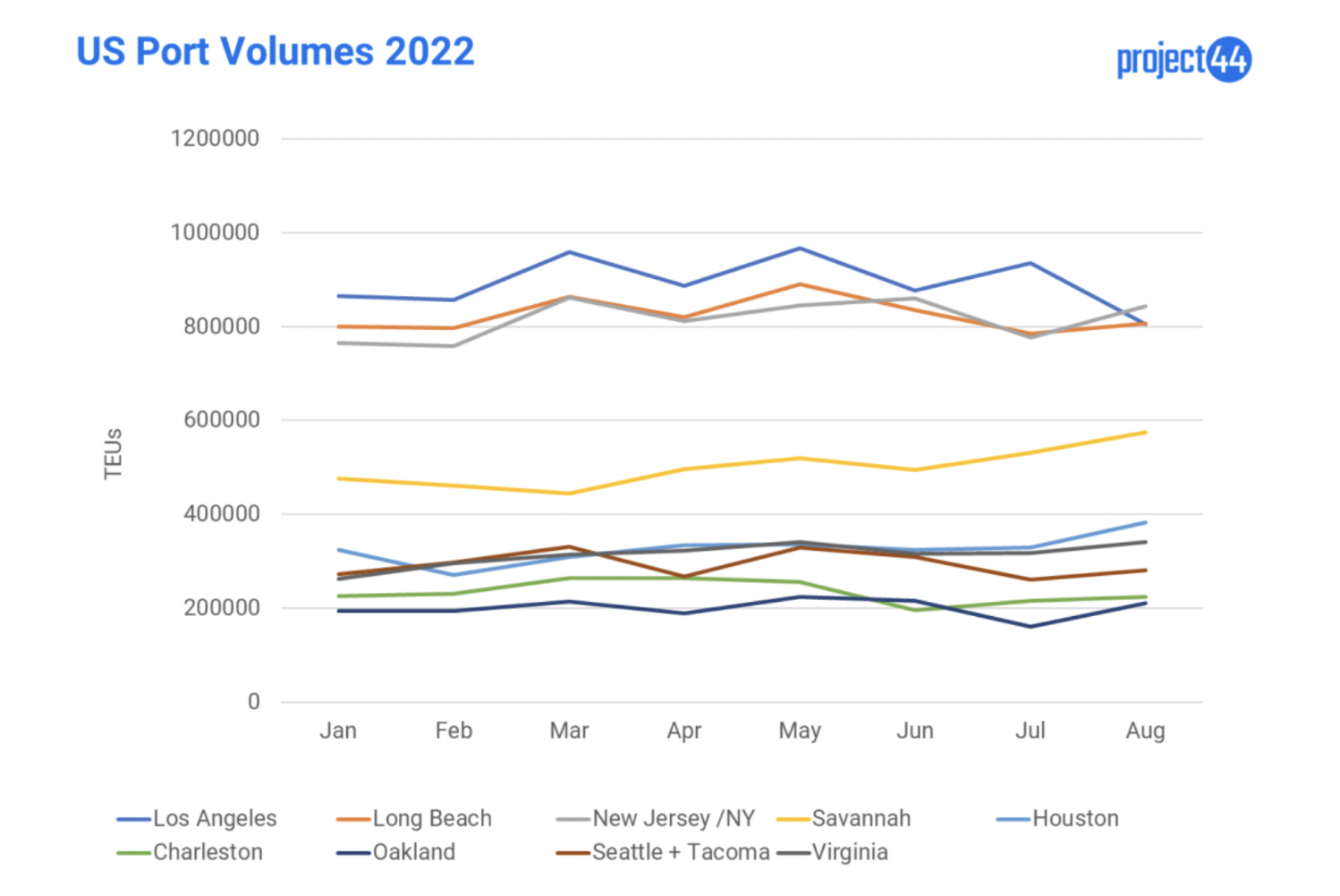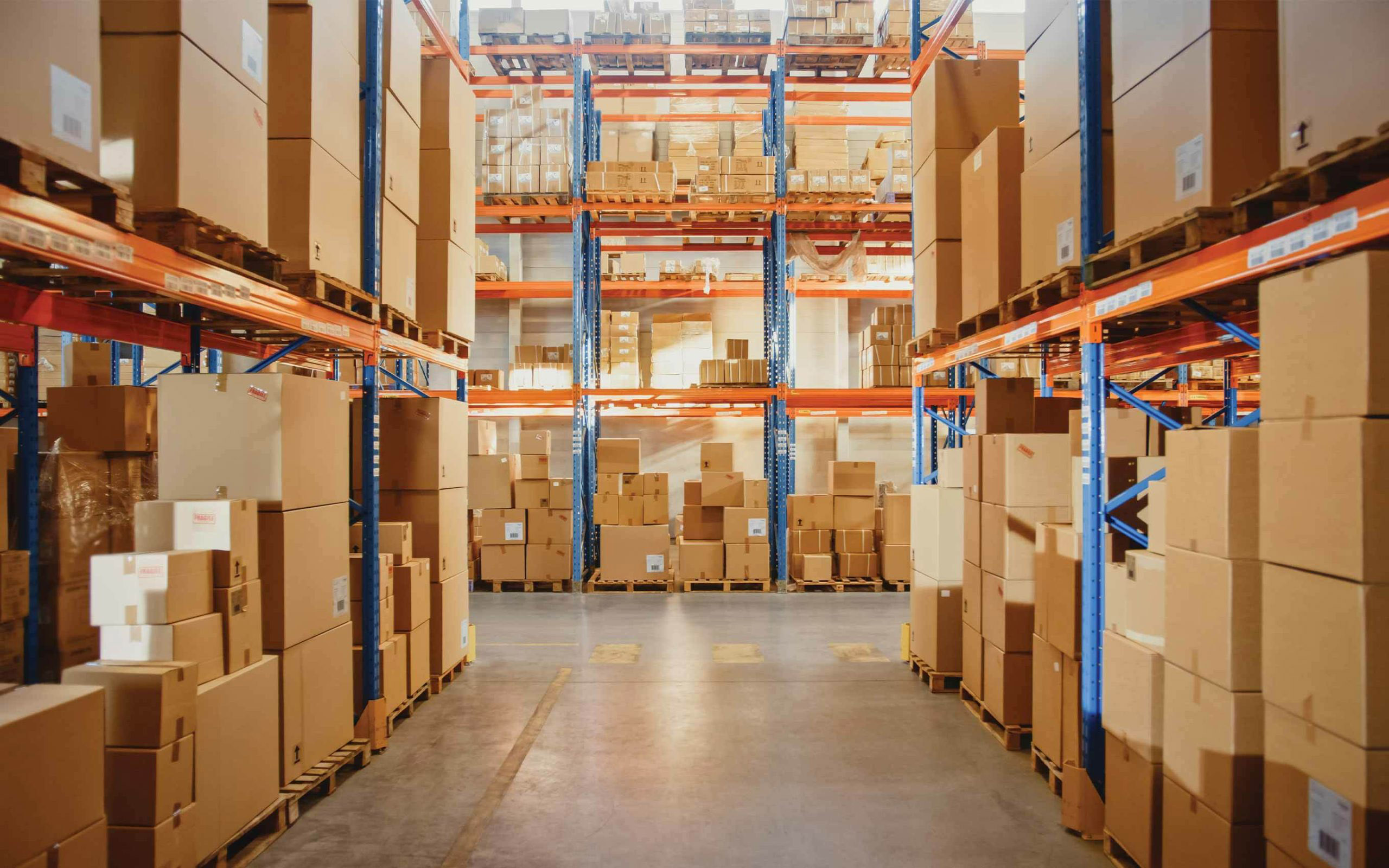Each month project44 publishes a State of Global Container Shipping Market report to keep our customers and market up to date on the latest news in ocean shipping. You can read the full report here or keep scrolling for key highlights and takeaways.
Key Takeaways from October 2022:
- As shipments move from west to east coast, New York overtakes LA as America’s busiest port
- As demand wanes, inventories rise, freight rates continue to fall and blank sailings increase
- Delays to disrupted vessel schedules and transit times drop
New York Becomes America’s Busiest Port for the First Time Ever
The Port of New York and New Jersey became the busiest port in the US for the first time ever, overtaking Los Angeles this past August. The move highlights continuing fears of strikes from unions that could disrupt transit lines from west coast ports . This trend also enables shippers to call directly at ports closer to large US population centers.
The shift is highlighted in year-over-year TEU data comparing New York and Los Angeles. For instance, there was an 8% increase in volume from 2021 to 2022 in New York, while Los Angeles saw a 15.6% decline over the same period. The trend is expected to continue for as long as fears of strike action on the west coast persist.

Shipment Delays Down 40% Ahead of the Holidays Isn’t All Good News
Carriers posted reductions in shipment delays of more than 40% year-over-year and double-digit reductions from August to September. While a reduction in delays should mean customers can expect their goods on time – a good thing to be sure – it’s important to consider the cause of easing delay rates.
Continued high inflation means lowered consumer confidence and spending, leading to less demand for shippers and rising retail inventories – total retail inventories in the US set a record in July at $731.6bn.
With the prospect of a global recession on the horizon, retail inventories in the US are 46% higher than they were before the financial crisis in 2007.
What to Expect
A bleak economic outlook has caused forecasters to bump up the return of pre-pandemic freight rates from mid-2023 to as early as the end of this year. To put it bluntly, the pandemic bonanza is definitely behind us.
Meanwhile, COVID resurgences, socioeconomic and environmental factors will continue to impact the supply chain, increasing the likelihood of both demand- and supply-side interruptions in the short- to medium-term. As we head into the final stretch of this year, look to Supply Chain Insights for more on how these factors and more add up to impact shippers, LSPs, carriers and end consumers.
To stay up to date, you can subscribe here.



